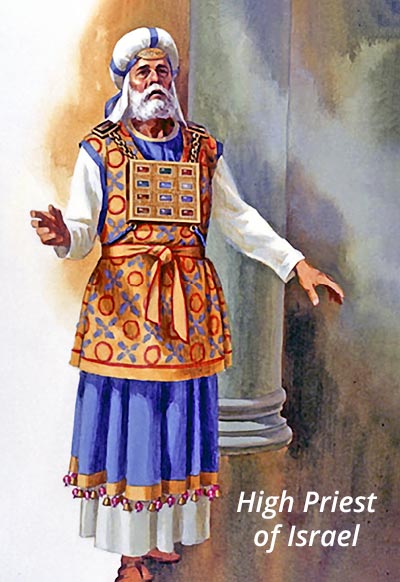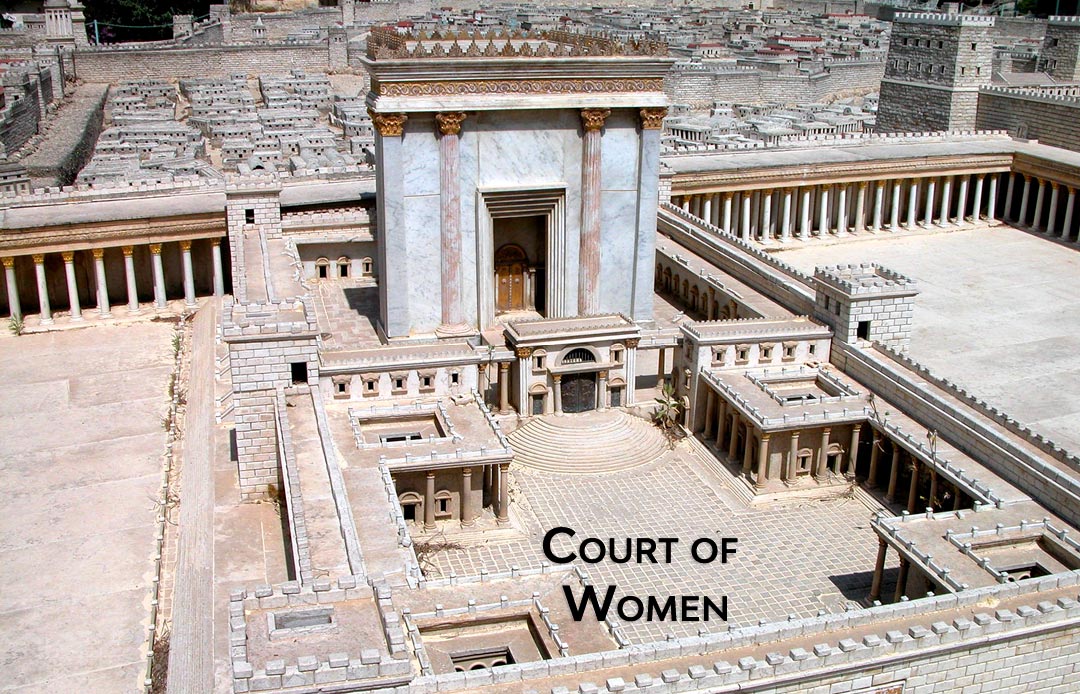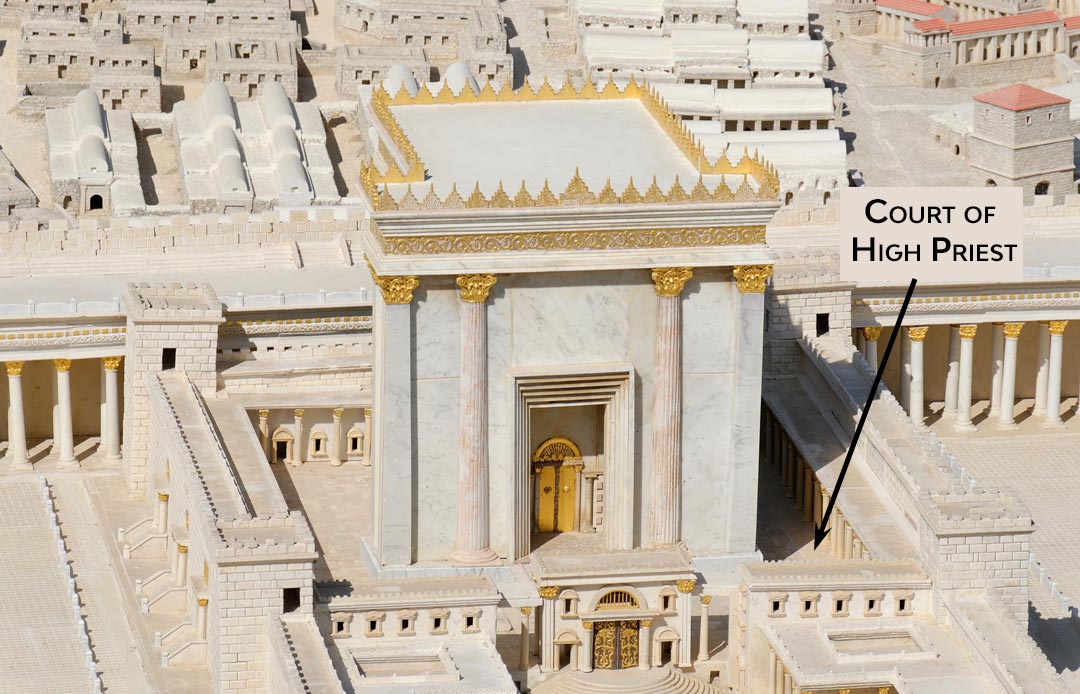Bible Question:
What is the difference between chief priests and high priests?
Bible Answer:
The terms chief priests and high priests appear together in the same verse only two times in the New Testament. Here are the only two passages in Scripture that contain both terms.
Then the chief priests and the elders of the people were gathered together in the court of the high priest, named Caiaphas; and they plotted together to seize Jesus by stealth and kill Him. Matthew 26:3-4 (NASB)
They led Jesus away to the high priest; and all the chief priests and the elders and the scribes gathered together. Mark 14:53 (NASB)
In addition, J. Jeremias has provided historical information about the chief priests and high priests.[1] The purpose of this article is to explain the meaning of chief priests, high priest, and the court of the high priests.

Meaning of High Priest
The title “high priest” appears twenty times in the Old Testament and fifty-four times in the New Testament gospels, and in the books of Acts and Hebrews. In the New Testament the Greek word for “high priest” is archiereus. When archiereus is used in the singular it refers to the “high priest.” The word literally has the sense of “beginning priest.” That is, the word has the sense that the priesthood starts here. Exodus 28:1 records the establishment of the priesthood for Israel.
Then bring near to yourself Aaron your brother, and his sons with him, from among the sons of Israel, to minister as priest to Me — Aaron, Nadab and Abihu, Eleazar and Ithamar, Aaron’s sons. Exodus 28:1 (NASB)
This verse reveals that both Aaron and his sons were priests for Israel, but Exodus 31:10 reveals that it was understood that Aaron was the lead priest or the high priest. Notice in this verse that Aaron is called the priest.
. . . the woven garments as well, and the holy garments for Aaron the priest, and the garments of his sons, with which to carry on their priesthood . . . Exodus 31:10 (NASB)
The term the priest or the high priest refers to the priest who had the highest position among the priests. The term high priest first appears in Numbers 35:25.

Character of the High Priest
Exodus 28:1-29:46 provides more details about the establishment of the priesthood in Israel. The high priest’s garments (blue robe, ephod, breastplate and turban with “Holy to Yahweh” engraved on a gold plate) were unique and symbolized his unique position as the spiritual leader (Exodus 29:1-37; Leviticus 6:19-22; Zechariah 3:4-5). The breastplate symbolized righteous judgment (Exodus 28:29-30) and the Urim and Thummin were used to determine God’s will (Exodus 28:29-30). The high priest was required to be a man of exceptional holiness. If he sinned, he brought sin upon the nation of Israel (Leviticus 4:3-12).
Function of the High Priest
The high priest was the mediator between God and man. Only he could enter the Holy of Holies on the Day of Atonement to make atonement for the sins of the nation of Israel. He was a type of Christ. Hebrews 9:15 and 12:24 tell us that Jesus is the mediator of a new covenant (Hebrews 8:6).
Leviticus 23:26-32 establishes the tenth day of the seventh month as the permanent Day of Atonement.
The LORD spoke to Moses, saying, “On exactly the tenth day of this seventh month is the day of atonement; it shall be a holy convocation for you, and you shall humble your souls and present an offering by fire to the LORD. Leviticus 23:26-32 (NASB)
Leviticus 16:6-34 describes the events of the Day of Atonement. This is important since Leviticus 16:6 tells us that Aaron would perform the act of worship. This was the function of the high priest.
In the time of Christ, the high priest’s responsibility included the following: making atonement for the nation of Israel on the Day of Atonement[2], participating in the sacrifices when he desired[3], functioning as the president of the Sanhedrin Council[4], performing a variety of ceremonial duties,[5] providing oversight of the temple, the priests, the levitical priests and the regulations[6] and teaching the people (Malachi 2:1-9).

Meaning of the Chief Priests
Out of the seventy-three times the terms chief priest and chief priests occur in the Bible, they occur sixty-five times in the New Testament. Many of our English Bibles translate the Greek word archiereus as “high priest” when it is used in the singular. But when the word is used in the plural, it is translated as “chief priests.” Notice that when the Greek word is singular it is translated as “high priest.” When it is plural, as “chief priests.”
G. D. Fee documents that the term “chief priest” may have been used in a technical sense to refer to the high priest. Joachim Jeremias has demonstrated that “chief priests” was also used in a general sense to refer to the upper level officers of the temple, who were priests. That is, the chief priests was also a general term that referred to the administrative staff of the temple. It had a general meaning.
From the time of E. Shürer, most scholars have considered this term [chief priests] to refer either to the high priest and ex-high priests in particular, or in general to “the members of those privileged families for which the high priests were taken.” (Shürer, II, I, 202-206). However, J. Jeremias has shown persuasively that it more likely refers to the specific group of Temple officers that included not only the high priest and captain of the Temple, but also the Temple overseers . . . and treasurers . . . listed twice in the Talmud (Tosephta Shekalim ii, 14, 177; Mishnah Shekalim v. 1-2). These priests had various administrative duties. [7]
Duties of the Chief Priests of the Temple
As we have already said, Joachim Jeremias has documented that in a general sense the term chief priests in Christ’s time refers to those who had the day-to-day responsibilities for the temple. These individuals were the “chief” or “top” priests of the temple in Christ’s time. They were below the high priest, the top priest, and the top five officers as listed below:
The Captain of the Temple
The Director of the weekly course
The Director of the daily course
The Temple Overseer
The Treasurer[8]
The next highest ranking priest below the high priest was the Captain of the Temple. He assisted the high priest and was usually the successor to the high priest.[9] The priest who was the Director of the weekly course scheduled ordinary priests for the twenty-four courses. The Director of the daily course scheduled ordinary priests for the 156 daily courses[10] The Temple overseers provided supervision of the temple. The temple treasurer handled the finances of the temple.[12] Matthew 26:3-4 helps us understand that these top officials were members of the Sanhedrin Council.
Conclusion:
Now we can understand from Matthew 26:3-4 that the high priest was the lead ordained priest among all the priests and the chief priests were his support staff.
Then the chief priests and the elders of the people were gathered together in the court of the high priest, named Caiaphas; and they plotted together to seize Jesus by stealth and kill Him. Matthew 26:3-4 (NASB)
Before we conclude we must ask, “What is your function in the church, or have you given yourself to serving the Lord in some way?” These men were to be holy men who were committed to serving the Lord from their hearts. Does that describe you? Are you of support in your church or are you a critic? We encourage you to visit the study, “It All Comes Down To Your Heart.”
References:
1. G. D. Gee. Priest In The New Testament. The Zondervan Pictorial Encyclopedia of the Bible. Zondervan Publishing House. 1977. vol. 4, pp. 849-850.
2. Joachim Jeremias. Jerusalem in the Time of Jesus. Fortress Press. 1969. p. 149.
3. Ibid., p. 150.
4. Ibid., p. 151.
5. Ibid.
6. Ibid., pp. 152-160.
7. Ibid., G. D. Fee.
8. Ibid., Joachim Jeremias., p. 160.
9. Ibid., p. 160-162.
10. Ibid., p. 163.
11. Ibid., p. 166.
12. Ibid.
Suggested Links:
It All Comes Down To Your HeartWho were the priests and Levites in the Bible? – Differences and Relationship
Jesus’ Dedication In The Temple
Jesus Goes To The Temple
Was a rope tied to the ankle of the High Priest?
Was Melchizedek a man or a type of Christ?
What was the Sanhedrin Council? Who were the members?
Jesus’ Cleansing of the Temple